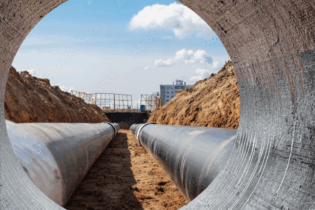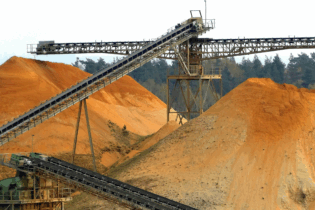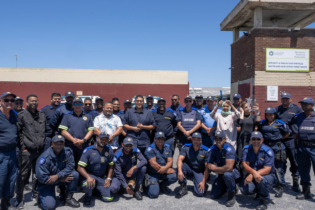Contaminated water and increases of deadly substances in drinking water are increasingly becoming the silent assassin of people in South Africa, especially the marginalised in rural areas.
Contaminated water already claimed victims. In 2008 the Provincial Portfolio Committee for Health in the Eastern Cape found a direct link between the deaths of 78 babies and contaminated water in the province. An official departmental report attributed the deaths to poor water quality in Barkley East, Maclear, Sterkspruit and Elliot. Previously Dr Anthony Turton, senior water researcher at the Council for Scientific and Industrial Research (CSIR), said, in an article published on IOL news, shrinking scientific and technical capacities causes a rapid deterioration in the quality of water in South Africa. Turton said as many as 50% of municipalities do not employ qualified engineers. He said toxic cyanobacteria, known as blue-green algae, is found in most South African rivers and reservoir systems. “This is a national crisis of note.”He suggested that that the matter be dealt with nationally. Former Minister of Water Affairs and Forestry Lindiwe Hendricks confirmed that 60% of municipal water treatment plants in South Africa are operating below standard. She conceded that badly polluted rivers could have a deadly affect on people and animals. The minister announced a Blue and Green Drop certification initiative to evaluate and classify municipal compliance with good and safe drinking water and wastewater standards. Current Minister of Water Affairs and Forestry, Edna Molewa said after the release of the Blue and Green Drop assessment reports of 2011, published on the website of the South African Government Information, that 914 water supply systems were assessed and that only 66 were awarded Blue Drop certificates. Absence of Blue Drop certification does not necessarily mean bad or life threatening water quality, but in many cases, probably far too many, it might be the case. A report published by IRIN: Humanitarian News and Analysis (a service of the United Nations Office for the Co-ordination of Humanitarian Affairs)warns that ageing infrastructure and rising demand spew potentially deadly bacteria into water systems. Trevor Balzer, senior official in the Department of Water Affairs, recently informed reporters in Parliament that the required upgrading of the entire water value chain could cost as much as R573 billion over 10 years. This, he said, includes about R394 billion for water services, R162 billion for water resources infrastructure and R16 billion for water demand management. The current budget allocations and grant-funded programmes provided by National Treasury only provide 44% of the 10-year expenditure projection. “You’ve got a gap of 56%,” Balzer said. Recently retired CEO of Overberg Water and water engineer, Dries Potgieter, said a higher percentage of people may have access to water but it does not imply “safe” water if the poor water quality is brought into the equation. “The situation is far worse than people and authorities tend to concede. The crisis is being played down and not fully comprehended by all.” Redressing infrastructural inadequacies too expensive and time consuming Potgieter said water problems developed over years as water purification plants were left to deteriorate. “Entire systems will have to be replaced or refurbished but technical incapacities and insufficient funds make this impossible.” He states that alternative solutions should be identified and implemented to support traditional systems. “Time is of the essence compared to the problem and the possible effects. We simply don’t have time and funds to regenerate and extend capacities of existing purification networks conventionally, to build new plants and to get experienced engineers and operators back in the system. Potgieter explained that private engineering companies did well by developing alternative water purification solutions and that excellent and promising results were achieved. Alternative processes the answer Potgieter said it must be determined to what requirements new processes or technology should comply to be deemed effective and acceptable. ”Among other things, it must be cheaper than conventional systems, be able to be installed in a very short time, the capacity design must be able to be adapted to the need, it must minimise or eliminate the reliance on chemicals, eliminate all pathogens and impurities, have a low electricity demand, be self-monitoring with low operating and maintenance cost, reduce corrosion in pipes, have a good shelf life and must produce high quality safe drinking water.” Replacing chemicals with hydro-chemical activation Hydro Chemical Activation (HCA) combines well understood water treatment technologies in a single reaction cell that treats water as it passes through a treatment unit. This includes a powerful high frequency electromagnetic field, peroxide formation, ozone injection and ultrasound.HCA technology seems to be a suitable option to replace and improve existing water treatment processes as it replaces chlorine and other chemicals. Instead of chemicals, the process produces a variety of compounds in a high frequency electrical field by re-arranging water molecules to produce chemically active ions in high concentration, although in some instances a naturally occurring molecular dissociation agent may be added.
The molecules dissociate from H2O to form OH–, O-2, OH+ and then also re-arrange to form hydrogen peroxide (H2O2), hydronium ions (H3O+) and hydrogen gas (H2). In this extreme environment, hydrogen peroxide also reacts with injected ozone to form peroxone H2O3, an extremely powerful oxidising agent. The effect of hydrogen peroxide in water treatment processes is well documented and is used routinely by water treatment facilities to treat drinking water (potable water) and effluents. High concentrations of formed ions will attack many organisms by disrupting their protective external coatings and structures. HCA generates and injects ozone (Oᵌ) gas into the process to enhance the oxidative state in the water; creating an even stronger sterilisation and purification process. These compounds have strong chemical effects on contaminant components and a powerful sterilisation effect on microorganisms in the water. The reactions reduce contaminants like dissolved iron, hydrogen sulphide an organic odour producing contaminants. It attacks the cellular structure of live microorganisms including bacteria, fungi and algae, effectively and destroys them. The treatments above have been made more effective by the inclusion of ultrasound in the generation cell. The ultrasound assists with disruption of organisms and creates microscopic areas in the water where extreme agitation occurs and promotes more active chemical reaction of the ozone and hydrogen peroxide. The result is treatment processes up to 10 times more effective than chlorine treatment in the destruction of live organisms and twice as effective at removal of organic and inorganic contaminants. The strong electromagnetic field in the cell induces electrostatic charges on particulate material and in dissolved ionic molecules that induces flocculation and improves sedimentation in water treatment processes. Particulate and other materials passing through the reaction cell emerge having had their structure altered and more charged sites available for attraction and binding in the treatment flocculation processes. These flocs demonstrate better cohesion, improved settling rates and removal of material from water. This allows water to be processed through the same facilities at higher flow rates without detrimental effects on process or final water quality. The implications for reduction in required investment in construction of infrastructure to meet increased water demand and improved quality are extremely significant to the water treatment industry. The final result is oxygenated water with no chemical residues. Dissolved salts that will potentially form deposits in the pipes and heating apparatus remain dissolved due to the enhanced polarity that improves solubility. Process preferred by Overberg Water Potgieter said that he, prior to his retirement as CEO of Overberg Water, explored several alternative water purification processes and that he is of opinion that a patented HCA process developed in South Africa, provides an acceptable and attractive solution and came to the conclusion that it should be further investigated by Overberg Water. A pilot plant was subsequently installed in Overberg Water`s Rûensveld East purification plant. Extensive testing was done with highly positive results, beyond expectation. The process, among others, also completely removed the colouring and odour effects of geosmin, a specific compound formed by algae commonly found in the The ewaterskloof and Cape Town municipal areas. Potgieter explained that the process removes, amongst others, bacteria like E COLI, Salmonella, Streptococcus, Staphylococcus, Legionella, Cryptosporidium and Giardia Lamblia. It complies with all requirements, is harmless to the environment, low on energy consumption, and works without harmful chemicals. The units are compact and can be easily integrated on most existing sites and new installations. They require low electrical input and will typically use 3 kW at a treatment rate of 170 m³/hour. Normal electrical supply is adequate and no special electrical installation is required. The treatment units are designed to fit into the existing piping structure and do not require additional infrastructure. The equipment is specifically constructed and configured for the special requirements of each site. Results achieved at Overberg Water indicated that this technology can be used for industrial water treatment, bottle rinsing, sterilisation, general amenities water supplied, arsenic contaminated water, aquaculture, abattoir wastewater discharge, irrigation water supply, rural drinking water, tanneries, drinking water treatment, maritime bilge water, bottled water, food safety compliance and public swimming pools. It is equally effective for the treatment of water for domestic consumption and for the treatment of sewage effluent. In the latter instance it will totally sanitize the effluent and sludge although further treatment of the effluent may be necessary to bring it up to drinking water standard. If COD is a problem, then the units can be programmed to treat that effectively as well. The sanitized sludge, though, now opens promising commercial and job creation opportunities for it to be further processed into eco-friendly fertilizer. Potgieter added that municipalities especially are interested and regard it as an addition to existing systems to facilitate safe water and blue and green drop status. “I believe the process complies with requirements of all municipalities and water purification and provision authorities. This technology could be a relatively quick solution for serious water problems and should become the preferred solution for third tier governments.”






